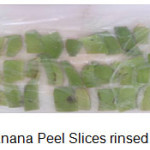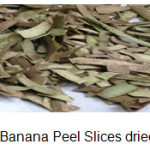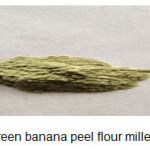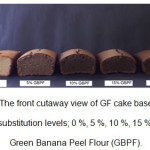Introduction
Celiac disease (CD), also called Gluten Enteropathy and Coeliac Sprue, is one of the most common food induced diseases in humans. The prevalence is approximately 0.3-1% in the general population of World1 and is increasing. CD is triggered by the consumption of wheat gluten in barley (hordein) and rye (secalin)2 and related cereals in genetically predisposed individuals3. Uncontaminated oats are tolerated by most patients with coeliac disease but are not totally innocent4. CD is associated with maldigestion and malabsorption of nutrients, vitamins, and minerals in the gastrointestinal tract since it leads to the atrophy of the intestinal villus3.
CD is a life-long disease that is an autoimmune enteropathy that can occur at any age and the only treatment available for CD individuals is a strict and life-long Gluten-free Diet5. Gluten-free diet requires significant lifestyle changes in celiac individuals and a critical process of adaptation. Therefore, researches on the nutritious alternatives supporting similar features with the wheat based formulations has importance in terms of improving the quality of celiac individuals’ lives, as well as supporting nutrient intake, enabling adaptation to gluten-free diet and increasing availability on the market by increasing the variety of gluten-free products. However, gluten-free raw materials do not possess gluten-forming proteins or baking properties.
Therefore, many GF-ceral products (especially breads) available on the market are still of low quality with a dry crumbling texture and a dense crumb structure, resulting in poor mouthfeel and a poor flavour 6,7.
Recently, possibility of using green banana pulp or peel flour as a functional gluten-free ingredient to produce gluten free products with high nutritional value and good quality is reported by many researchers and drawin.
Bananas are fruit of the Musa spp., comprising dessert banana (Musa AAA) and plantain (cooking banana, Musa BBB). It is reported by Sarawong et al.8 to be one of the most produced and consumed food crops in the world, and its worldwide production tends to increase. When banana is green (unripe), it is a good source of dietary fibre, resistant starch (RS2 type: ungelatinised starch granule), antioxidants (especially catechin, epicatechin and gallocatechin), total phenolics, minerals ( Ca, Mg, P, K ) and vitamins (pro-vitamin A, B1, B2, C)9,10,11,12,13,14,15.
The peel of banana that represents about 40% of the total weight of banana16 has been underutilized despite the beneficial health benefits for humans17 and to be able to offer new product with standard composition for various industrial and domestic uses18.
The recent studies on banana pulp and peel has focused on drying characteristics 9,19,20,21,22,23,24 physicochemical properties25, rheological and antioxidant properties14, phenolic profilling26 of their unripe pulp and peel flours, antioxidant activity of peel exracts27 and antioxidant phenolic compounds of banana peel flours28.
Researches on product development using banana peel are very limited. Ramli et al.11 prepared yellow alkaline noodles by partial substitution of wheat flour with ripe banana pulp and peel flours. They reported that Cavendish banana pulp and peel flour could be useful for controlling starch hydrolysis of yellow noodle. Onwuka and Onwuka,29 has investigated the effects of three different stages of ripening on the chemical composition and functional properties of green plantain pulp flour and plantain flour based cake. Yomeni et al.,30 studied the effects of four different stages of ripening on sensory and physicochemical characteristics of plantain cakes and chips.
However, to the best of authors’ knowledge, there are no studies related to the utilization of green Cavendish banana peel flour in gluten free cake production. In this study, it is aimed to develop nutritious and functional GF cakes by substituting green banana peel flour (GBPF) with rice flour (5%, 10%, 15% and 20%) and to determine some physical properties of control and GBPF substituted cakes.
Materials and Methods
110-120 days grown green bananas (Musa Cavendishii) which are going to be used in production of green banana peel flour, were harvested (Gazipaşa, Antalya) and transferred to Manisa Celal Bayar University in 12 hours. The colour index of green banana peel was 2 (completely green) with reference to commercial peel colour scale13. Gluten free rice flour was supplied from Ege Glutensiz Ekmek ve Gıda Ürünleri San. Tic. Ltd. Şti., Xanthan gum was supplied from Smart Kimya Ltd. Şti., Granulated sugar (Balküpü), eggs (Güres XL A class), baking soda (Dr.Oetker) and sunflower seed oil (Yonca) were supplied from a local market in Manisa.
Production of Green Banana Peel Flour (GBPF)
Green bananas coming to the laboratory were immersed in clean water31,32 to remove latex and dirt, and washed efficiently. Peels were removed and rinsed in citric acid solution (1g/L)33. They were cut into 2 – 3 cm pieces (Figure 1), rinsed again for one minute in citric acid solution (1g/L) and stored at -18°C before lyophilization. Frozen peels were freeze-dried for 48 hours (24 hours sublimation, 24 hours desorption) in a freeze-drier (Cryst–alfa 2,4 LD Plus, Newtown Wem, Shropshire, UK) and ground using a blade grinder (Retsch, GRINDOMIX 200, Germany). Figure 2 shows green banana peel slices after lyophilization. Green banana peel flour particles under 212 µm (Figure 3) were collected after passing through a sieve shaker (Şimşek Laborteknik,ES-608,Turkey ) for five minutes. GBPF (Figure 3) was stored in sealed glass containers at 4˚C until gluten free cake production. Green banana peel flour was characterized in Table 1.
 |
Figure 1: Green Banana Peel Slices rinsed citric acide solution
|
 |
Figure 2: Green Banana Peel Slices dried by Lyofilization |
 |
Figure 3: Green banana peel flour milled and sieved |
Table 1: Proximate components and some physicochemical properties of green banana peel flour
| Moisture (%) |
2.83 ± 0.08 |
| Ash (%dm1) |
1.22 ±0.52 |
| Fat (%dm1) |
6.17± 0.27 |
| Protein (%dm1) |
11.16± 0.06 |
| Carbohydrates (%) |
81.44 |
| aw |
0.194 |
| Ph |
4.74± 0.05 |
| Titratable acidity (g malic acid/100 g) |
1.72± 0.09 |
| L* |
65.16± 0.13 |
| a* |
-1.72± 0.01 |
| b* |
22.49± 0.02 |
1Dry matter
Values are mean ± SE, n=6
Methods
Cake Production
Cake dough was prepared according to Gularte et al.34 with some modifications. Gluten free cake formulation was presented in Table 2. GBPF was substituted with rice flour in proportions of 5%, 10%, 15% and 20%. All powdery ingredients (rice flour, green banana flour, baking soda, xanthan gum) were mixed homogeneously in a closed vessel and then added to the kneader machine (Kitchenaid Artisan, USA), which other ingredients (sugar, milk, sunflower seed oil) had been put in before. All ingredients were mixed for one minute at 4th cycle followed by 9 minutes at 6th cycle. Baking process was performed at 175 °C for 70 minutes. All physical analyses were carried out after one hour cooling process. Control and green banana peel flour substituted cakes were given in Figure 4.
 |
Figure 4: The front cutaway view of GF cake based rice flour with the substitution levels; 0 %, 5 %, 10 %, 15 %, 20 % of Green Banana Peel Flour (GBPF).
|
Table 2: Gluten-free cake formulation
| Ingredients (g) | Control cake | |||||
| 5 % GBPF | 10 % GBPF | 15 % GBPF | 20 % GBPF | |||
| Rice flour | 150 | 142.5 | 135 | 127.5 | 120 | |
| GBPF | 0 | 7.5 | 15 | 22.5 | 30 | |
| Sugar | 150 | 150 | 150 | 150 | 150 | |
| Xsantan gum | 0.616 | 0.616 | 0.616 | 0.616 | 0.616 | |
| Baking powder | 5.625 | 5.625 | 5.625 | 5.625 | 5.625 | |
| Sunflower seed oil | 56.25 | 56.25 | 56.25 | 56.25 | 56.25 | |
| Egg | 93.75 | 93.75 | 93.75 | 93.75 | 93.75 | |
| Semi-skimmed milk | 112.5 | 112.5 | 112.5 | 112.5 | 112.5 | |
Physical Analysis
Volume (mL), specific volume (cm3/g), density (g/cm3) and height (cm) were carried out according to Ho et al.35 . Baking loss was calculated according to Hathorn et al.36.
Cake weight: Cakes were weighed in grams (g) using analytical balance.
Cake volume: Cake volume was measured by rapeseed displacement method.
Cake specific volume: Cake specific volume was calculated by following formula after measuring cake volume and weight.

Cake density: Cake density was calculated by following formula after measuring cake volume and weight.
![]()
Baking loss: Baking loss of was calculated by following formula after measuring dough weight (DW) and cake weight (CW).
![]()
Cake height: Cake height was calculated as mean value of 3 height measurements comprising middle point height and 2 highest points.
Results and Discussion
Physical properties of gluten free control and GBPF substituted cakes were given in Table 3. Use of GBPF in cake production affected physical properties of cakes which were determined in terms of cake volume, specific volume, density, height and baking loss statistically (p<0.05). 5% and 10% GBPF substitution did not affect cake volume statistically. However, cake volume decreased dramatically by 15% and 20% substitution levels which were also statistically different from control cake. As reported by Stauffer37 a, volume, specific volume and intensity of cake is related with viscosity of dough. Viscosity of dough should be proper for holding the air, which is produced by baking powder during baking process and also coming from outside by mixing the dough. Therefore, increase in viscosity by adding small amounts of fiber helped holding the air and increased volume of cake. Use of high amounts of fiber resulted high dough viscosity; this situation prevented enlargement and caused decrease of cake volume as formerly explained by Gomez et al.38. In a similar way, high percentage of substitution (15% and 20% GBPF) on cake production resulted in lower cake volume, specific volume and higher cake density and these cakes were statistically different from control cake (p<0.05). Increase of GBPF substitution resulted in decrease of volume and specific volume which lead to increase of cake intensity.
Table 3: Some physical properties of GF control cake and GF cakes with green banana peel flour (GBPF)
| Cake sample | Cake Volume (cm3) | Specific Volume (cm3/g) | Density (g/cm3) | Baking Loss (%) | Height (cm) |
| Control | 1002.11a±76.337 | 2.35a±0.163 | 0.43c±0.029 | 18.14a±0.698 | 5.32b±1.473 |
| 5%GBPF | 1034.11a±4.160 | 2.41a±0.015 | 0.41c±0.003 | 17.85ab±0.582 | 5.77a±0.670 |
| 10%GBPF | 985.11ab±44.404 | 2.29ab±0.107 | 0.44bc±0.021 | 17.49ab±0.288 | 5.44b±2.776 |
| 15%GBPF | 906.44bc±43.473 | 2.10bc±0.109 | 0.48b±0.025 | 17.02bc±0.547 | 4.74c±1.060 |
| 20%GBPF | 831.44c±45.806 | 1.91c±0.108 | 0.52a±0.028 | 16.38c±0.220 | 4.36d±0.960 |
Values are mean ± SE, n=3.
Means with the same letter in a column are not statistically different from each other (p<0.05).
Cake specific volume, which is defined as volume of unit cake mass, decreased by increasing GBPF level as a result of high dough viscosity preventing rising of cake in the oven. Similar to cake volume, 5% and 10% GBPF substituted cakes were not statistically different from control cake in terms of specific volume. Gomez et al. 38 produced fiber enriched cakes by substituting 12%, 24% and 36% wheat bran, oat bran and cellulose with wheat flour. When control cake (volume: 508.0 mL, specific volume:2.74 cm3/g) was compared with other cakes, substitution of different fiber sources increased volumes and specific volumes of cakes to a certain extent. It was found that 36% fiber substituted cakes (569.1 mL, 3.10 cm3/g) had higher volume and specific volume values than control cake, but had lower volume and specific volume than 12% substituted cake (615.4 mL, 3.35 cm3/g) and 24% substituted cake (626.2 mL, 3.40 cm3/g). In a study conducted by Sharoba et al.39, fruit and vegetable wastes were utilized in production of wheat flour cake; 500-600 μm fiber particles which had been obtained from orange waste, carrot pulp, orange peel and green pea pod, were used as dietary fiber source. Different fiber particles with 5%, 10%, 15% and 20% percentages were substituted with wheat flour and it was determined that all cakes had higher volumes and specific volumes than control cake. Besides, percentage increases of dietary fiber substitution induced increase in volumes and specific volumes. When volume (1084.93 mL) and specific volume (2.38 cm3/g) of control cake were compared with others, 20% orange waste pulp enriched cake had the highest volume (1481.28 mL) and specific volume (3.21 cm3/g). Green pea pod (1391.24 mL), carrot pulp (1357.42 mL) and potato peel (1286.59 mL) fiber enriched cakes by 20% followed orange waste pulp enriched cake. However, in our study increasing GBPF levels (15% and 20%) used as fiber source resulted in decreasing cake volume and specific volume. This may be related with differences in cake formulations, particle size and source of fibers.
Cake density, which is defined as weight of unit cake volume (g/cm3), increased by ascending GBPF substitution (Table 3). There were no differences between density of control cakes and 5%, 10% GBPF substituted cakes, likewise volume and specific volume values of cakes (p>0.05).
When cake height values were investigated, 5% GBPF substituted cake had the highest height which was statistically different from control and other gluten free cakes (p<0.05). It was determined that average height of control cake (5.32 cm) was statistically similar with 10% GBPF substituted cake (5.44 cm), and substitution levels higher than 10% GBPF resulted in a dramatical decrease of cake height values.
Baking loss of 5% and 10% GBPF substituted cakes were statistically similar with control cake. 15% and 20% GBPF substituted cakes had less baking loss and were statistically different from control. Mohamed et al.40 reported that green banana flour components which had high water binding capacity, especially insoluble fibers (lignin, cellulose, hemicellulose), could cause water intake from other ingredients in product formulation. They also reported that high percentage substitution of green banana flour leads to high water intake from other ingredients in product formulation, and it effects quality characteristics of dough and final product such as volume, hardness and colour negatively. When Table 3 is examined, decrease of cake volume, specific volume and height by high percentage substitution of GBPF (15% and 20%) can be explained by this phenomenon. In our study, decrease of baking loss with increasing GBPF substitution level may be attributed to high water holding capacity (4.91-5.88 g water/ g dry matter) reported by Alkarkhi et al.25 which is a functional characteristic of green banana flour.
As a result, GBPF substituted gluten free cakes were successfully produced. Physical analyses of gluten free cakes showed that 5% and 10% GBPF substitution did not affect gluten free cake volume, specific volume, density and baking loss negatively. 5% and 10% GBPF substituted cakes were not different from control cake statistically (p>0.05). However, substitution levels of 15% and 20% resulted in poorer physical properties. Apart from these results given in the study, sensory analysis (data not shown) indicated that all gluten free GBPF substituted cakes were sensorially acceptable as a result of hedonic tests, 5% and 10% GBPF substituted cakes receiving higher scores than 15% and 20%.
Acknowledgements
The authors would like to thank to TUBITAK (Scientific and Technological Research Council of Turkey) for their financial support. This research is a part of TUBITAK project 115 O 922.
References
- Fasano A, Araya M, Bhatnagar S, et al. Federation of International Societies of Pediatric Gastroenterology, Hepatology, and Nutrition Consensus Report on Celiac Disease. Journal of Pediatric Gastroenterology and Nutrition;47(2):214-219 (2008).
CrossRef - Vader LW, Stepniak DT, Bunnik EM, Kooy YM, de Haan W, Drijfhout JW, Van Veelen PA, Konig F. Characterization of cereal toxicity for celiac disease patients based on protein homology in grains. Gastroenterology;125:1105-1113: (2003).
CrossRef - Niewinski, M. M.Advances in Celiac Disease and Gluten-Free Diet. Journal of the American Dietetic Association; 108(4):661–672: (2008).
CrossRef - Ciclitira, P. J., Ellis, H. J., & Lundin, K. E. A. Gluten-free diet – What is toxic? Best Practice and Research: Clinical Gastroenterology; 19(3 SPEC. ISS.):359–371: (2005).
- Hill ID, Dirks MH, Liptak GS, Coletti RB, Fasano A, Guandalini S, Hoffenberg EJ, Horvath K, Murray JA, Pivor M, Seidman EG, North American Society for Pediatric Gastroenterology, Hepatology and Nutrition. Guideline for the diagnosis and treatment of celiac disease in children: Recommendations of the North American Society for Pediatric Gastroenterology, Hepatology and Nutrition. J Pediatr Gastroenterol Nutr. ;40:1-19: (2005).
CrossRef - Gallagher, E., Gormley, T.R. & Arendt, E.A. Crust and crumb characteristics of gluten free Breads. Journal of Food Engineering; 56:153–161: (2003).
CrossRef - O’Neill, J.Gluten-free foods: trends, challenges, and solutions. Cereal Foods World; 55; 220–223: (2010).
CrossRef - Sarawong, C., Schoenlechner, R., Sekiguchi, K., Berghofer, E., & Ng, P. K. W. Effect of extrusion cooking on the physicochemical properties, resistant starch, phenolic content and antioxidant capacities of green banana flour. Food Chemistry; 143: 33–39: (2014).
CrossRef - Choo, C. L., & Aziz, N. A. A.Effects of banana flour and β-glucan on the nutritional and sensory evaluation of noodles. Food Chemistry; 119(1): 34–40: (2010).
CrossRef - Menezes, E. W., Tadini, C. C., Tribess, T. B., Zuleta, A., Binaghi, J., Pak, N., Lajolo, F. M. Chemical Composition and Nutritional Value of Unripe Banana Flour (Musa acuminata, var. Nanicão). Plant Foods for Human Nutrition, 66(3): 231–237: (2011).
CrossRef - Ramli, S., Alkarkhi, A. F. M., Shin Yong, Y., Min-Tze, L., & Easa, A. M. Effect of banana pulp and peel flour on physicochemical properties and in vitro starch digestibility of yellow alkaline noodles. International Journal of Food Sciences and Nutrition ;60 (4):326–40: (2009).
CrossRef - Tribess, T. B., Hernández-Uribe, J. P., Méndez-Montealvo, M. G. C., Menezes, E. W., Bello-Perez, L. A., & Tadini, C. C. Thermal properties and resistant starch content of green banana flour (Musa cavendishii) produced at different drying conditions. LWT – Food Science and Technology, 42(5):1022–1025: (2009).
CrossRef - Aurore, G., Parfait, B., & Fahrasmane, L Bananas, raw materials for making processed food products. Trends in Food Science & Technology; 20(2): 78–91: (2009).
CrossRef - Bertolini, A. C., Bello-Pérez, L. a., Méndez-Montealvo, G., Almeida, C. a S., & Lajolo, F. Rheological and functional properties of flours from banana pulp and peel. Starch/Staerke; 62:277–284: (2010).
- Da Mota, R. V., Lajolo, F. M., Cordenunsi, B. R., & Ciacco, C. Composition and Functional Properties of Banana Flour from Different Varieties. Starch – Stärke; 52(2–3): 63–68:(2000).
CrossRef - Tchobanoglous, G., Theisen, H., & Vigil, S. Integrated solid waste management: Engineering principles and management issues. New York: McGraw-Hill.(1993).
- Rodriguez-Ambriz, S. L., Islas-Hernández, J. J., Agama-Acevedo, E., Tovar, J., & Bello- Pérez, L. A. Characterization of a fiber-rich powder prepared by liquefaction of unripe banana flour. Food Chemistry; 107: 1515–1521: (2008).
CrossRef - Happi Emaga, T., Andrianaivo, R. H., Wathelet, B., Tchango, J. T., & Paquot, M. Effects of the stage of maturation and varieties on the chemical composition of banana and plantain peels. Food Chemistry; 103(2):590–600: (2007).
CrossRef - Agama-Acevedo, E., Islas-Hernández, J. J., Pacheco-Vargas, G., Osorio-Díaz, P., & Bello-Pérez, L. A. Starch digestibility and glycemic index of cookies partially substituted with unripe banana flour. LWT – Food Science and Technolog; 46(1):177–182: (2012).
- Utrilla-Coello, R. G., Agama-Acevedo, E., Osorio-Díaz, P., Tovar, J., & Bello-Pérez, L. A. Composition and starch digestibility of whole grain bars containing maize or unripe banana flours. Starch/Staerke; 63: 416–423: (2011).
- Ovando-Martinez, M., Sáyago-Ayerdi, S., Agama-Acevedo, E., Goñi, I., & Bello-Pérez, L. A. Unripe banana flour as an ingredient to increase the undigestible carbohydrates of pasta. Food Chemistry; 113(1):121–126: (2009).
CrossRef - Agama-Acevedo, E., Islas-Hernandez, J. J., Osorio-Díaz, P., Rendón-Villalobos, R., Utrilla-Coello, R. G., Angulo, O., & Bello-Pérez, L. A. Pasta with unripe banana flour: physical, texture, and preference study. Journal of Food Science; 74(6):263-267:(2009).
CrossRef - Juarez-garcıa, E., Agama-acevedo, E., Sáyago-ayerdı, S. G., Rodríguez-ambrız, S. L., & Bello-pérez, L. A. Composition, Digestibility and Application in Breadmaking of Banana Flour. Plant Foods for Human Nutrition; 61(3):131–137: (2006).
CrossRef - Pekke, M. a., Pan, Z. L., Atungulu, G. G., Smith, G., & Thompson, J. F.Drying characteristics and quality of bananas under infrared radiation heating. International Journal of Agricultural and Biological Engineering; 6(3): 58–70: (2013).
- Alkarkhi, A. F. M., Ramli, S. bin, Yong, Y. S., & Easa, A. M. Comparing physicochemical properties of banana pulp and peel flours prepared from green and ripe fruits. Food Chemistry, 129(2), 312–318 (2011).
CrossRef - Passo Tsamo, C. V., Herent, M. F., Tomekpe, K., Happi Emaga, T., Quetin-Leclercq, J., Rogez, H., Andre, C.Phenolic profiling in the pulp and peel of nine plantain cultivars (Musa sp.). Food Chemistry, 167, 197–204: (2015).
CrossRef - González-Montelongo, R., Gloria Lobo, M., & González, M. Antioxidant activity in banana peel extracts: Testing extraction conditions and related bioactive compounds. Food Chemistry, 119(3), 1030–1039: (2010).
CrossRef - Rebello, L. P. G., Ramos, A. M., Pertuzatti, P. B., Barcia, M. T., Castillo-Muñoz, N., & Hermosín-Gutiérrez, I.Flour of banana (Musa AAA) peel as a source of antioxidant phenolic compounds. Food Research International, 55, 397–403: (2014).
CrossRef - Onwuka, G. I., & Onwuka, N. D.The Effects of Ripening on the Functional Properties of Plantain and Plantain Based Cake. International Journal of Food Properties, 8(2), 347–353: (2005).
CrossRef - Yomeni, M. O., Njoukam, J., & Tchango Tchango, J.Influence of the stage of ripeness of plantains and some cooking bananas on the sensory and physicochemical characteristics of processed products. Journal of the Science of Food and Agriculture; 84(9): 1069–1077: (2004).
CrossRef - Nelson, S.Postharvest Rots of Banana. Plant Disease; Oct.:PD-54: (2008).
- Nelson, S. ‘‘Banana ripening: Principles and practice.’’ http://www.ctahr.hawaii.edu/nelsons/banana/ripeningbunchmanagement.pdf, Date of access:16.08.2015.
- Rayo, L. M., Carvalho, L. C., Sardá, F. A. H., Dacanal, G. C., Menezes, E. W., & Tadini, C. C. Production of instant green banana flour (Musa cavendischii, var. Nanicão) by a pulsed-fluidized bed agglomeration. LWT – Food Science and Technology; 63:461-469: (2015).
CrossRef - Gularte, M. A., de la Hera, E., Gómez, M., & Rosell, C. M. Effect of different fibers on batter and gluten-free layer cake properties. LWT – Food Science and Technology; 48(2):209–214: (2012).
CrossRef - Ho, L.-H., Abdul Aziz, N. A., & Azahari, B. Physico-chemical characteristics and sensory evaluation of wheat bread partially substituted with banana (Musa acuminata X balbisiana cv. Awak) pseudo-stem flour. Food Chemistry; 139(1–4): 532–539:(2013).
CrossRef - Hathorn, C. S., Biswas, M. A., Gichuhi, P. N., & Bovell-Benjamin, A. C. Comparison of chemical, physical, micro-structural, and microbial properties of breads supplemented with sweetpotato flour and high-gluten dough enhancers. Food Science and Technology:; 41:803–815: (2008).
CrossRef - Stauffer, C. E. Functional additives for bakery foods. New York: Van Nostrand Reinhold: (1990).
- Gomez, M., Moraleja, A., Oliete, B., Ruiz, E., Caballero P.A. Effect of fibre size on the quality of fibre-enriched layer cakes. LWT – Food Science and Technology; 43: 33–38: (2010).
CrossRef - Sharoba, A.M., Farrag, M. A. , Abd El-Salam, A.M. Utilization of some fruits and vegetables waste as a source of dietary fiber and its effect on the cake making and its quality attributes. Journal of Agroalimentary Processes and Technologies;19(4):429-444: (2013).
- Mohamed, A., Xu, J., & Singh, M.Yeast leavened banana-bread: Formulation, processing, colour and texture analysis. Food Chemistry; 118(3): 620–626: (2010).
CrossRef

This work is licensed under a Creative Commons Attribution 4.0 International License.





